Many of Costa Rica’s beautiful beaches have sand that ranges in color from light to dark gray. Fewer are tan, a handful are almost white, and one or two even have a pink hue. But there is something mysterious about a truly black sand beach. In this post, we’ll take you to Playa Carbon. This secluded beach, hidden just north of Playa Grande and Tamarindo, has some of the blackest sand in Costa Rica.
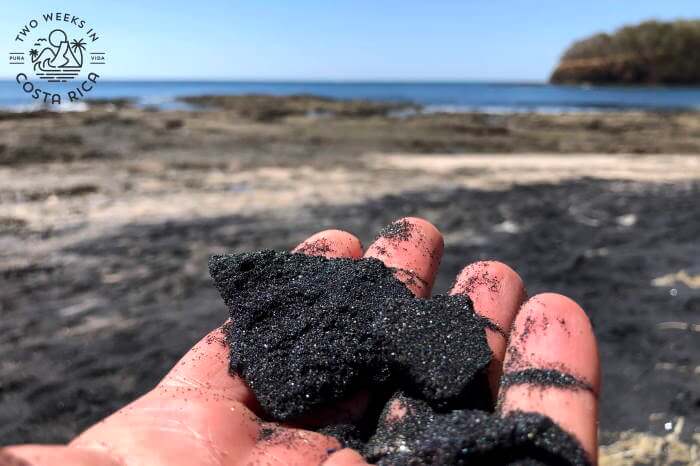
Location
Playa Carbon is located in northwestern Costa Rica in a region known as Guanacaste. It is closest to the beach town, Playa Grande.
This quiet community sits just across an estuary from the much bigger destination of Tamarindo. There are several neighborhoods made up of vacation homes, villas, and a few small hotels.
In Playa Grande, you also will find Parque Nacional Marino Las Baulas (Leatherbacks National Marine Park). This park protects beaches, estuaries, forests, and marine zones in and around Playa Grande.
Las Baulas is most famous for its protection and conservation of leatherback sea turtles.
Playa Carbon is one of the four beaches in Las Baulas National Marine Park. The others are Playa Langosta (south of Tamarindo), Playa Grande, and Playa Ventanas.

Why Is Playa Carbon’s Sand Black?
The sand at Playa Carbon is very unique, which makes it a special place to visit. While adjacent beaches in the area have gray or tan colored sand, this one has a thick coating of almost pure black.
If you take a closer look, you’ll actually notice that the sand on Playa Carbon forms in layers. The top crust is close to pure black, but underneath is almost a white color. In certain spots, the sand is pure black on one part of the beach and pure white on another.
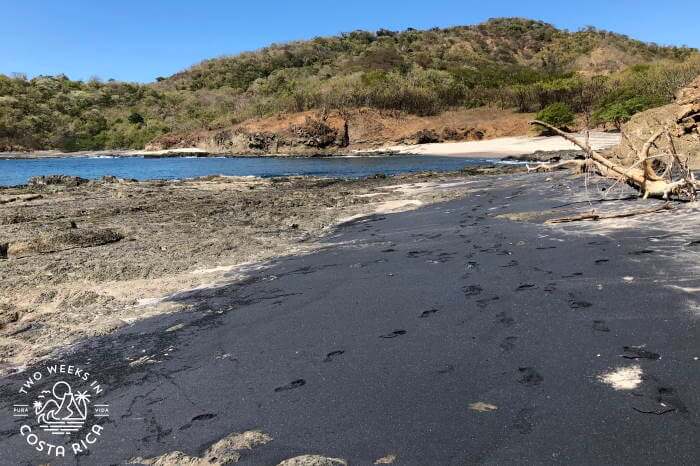
The mystery of this black sand lies in the sea currents. Currents collect and then deposit high concentrations of magnetite and magnetic iron oxide onto the shore. These black compounds are formed naturally when volcanic rocks break down from the friction of the ocean into smaller pieces. They get swept up in high concentrations, making the sand black.
There is an interesting University of Costa Rica study that relates to Playa Carbon. The University was studying the opportunities to extract metals from the country’s beaches back in the 1960s. They found the highest amounts of iron oxide at Playa Carbon. The beach’s sand was between 75-82% pure iron oxide!
Fun Fact: Since these compounds are the building blocks of raw metal, if you were to take a magnet with you to the beach, you’d be able to pick up some of the sand with it.
Getting to Playa Carbon
Part of the allure of Playa Carbon is that it is secluded and not accessible by car. To get there, you’ll need to start from a different beach named Playa Ventanas (the one in Guanacaste).
You can get to Playa Ventanas by either walking north along Playa Grande or by driving the beach road through Las Baulas National Marine Park. There is no fee to enter park limits.
Playa Ventanas has two small parking lots near the northern end. After you reach the first lot, the road will get very narrow and end at the second lot. You can park at either lot but the farther one is a bit closer to Playa Carbon.
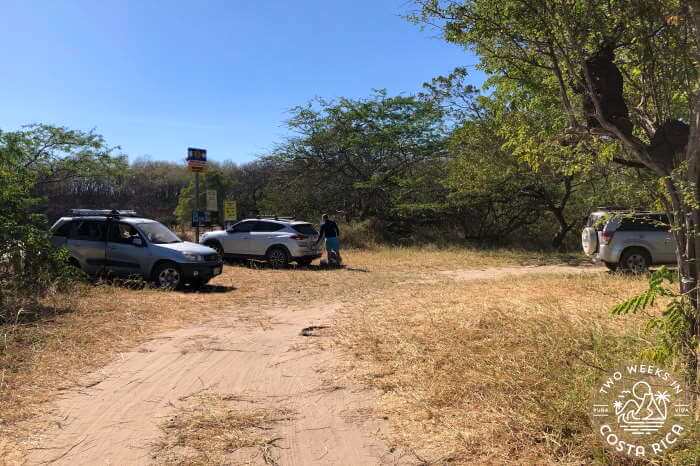
Be sure not to leave anything in your car, as this area is remote and car break-ins have happened here. There was no parking attendant providing security when we visited.
From the parking lot at Playa Ventanas, there are two ways to get to Playa Carbon. At low tide, you can walk north right along the beach. There’s a point/cliff with some uneven rocks so be sure to have good-gripping shoes.
Or, at any tide, you can take a short, forested trail over the hill.
The Trail to Playa Carbon
The trail to Playa Carbon is easy to find. From the parking lot, walk up the beach to the very northern end of Playa Ventanas. During rainy season, you may have to cross a seasonal stream.
Look for a large tree a little inland from the point. The trailhead is on the right side of the tree where the hill is less steep.
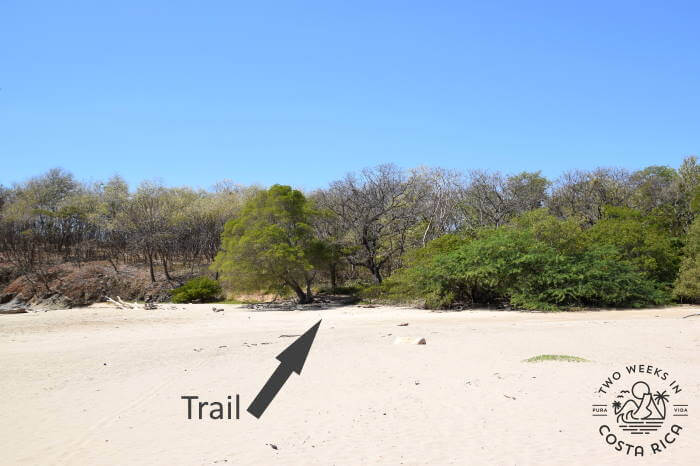
We weren’t sure what to expect from this trail as there wasn’t much information online. We wore sneakers and brought a baby carrier for our youngest. But in reality, the trail is very short and only took us about five minutes. It is not very steep and easily walkable even with flip-flops.
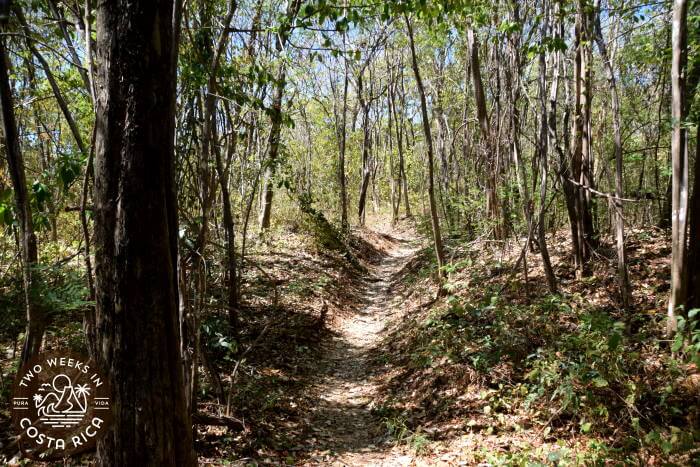
Accessibility
Although the trail is not very steep, it is narrow and has some uneven spots. It’s just a simple rustic trail through the forest so you won’t find railings or manmade steps.
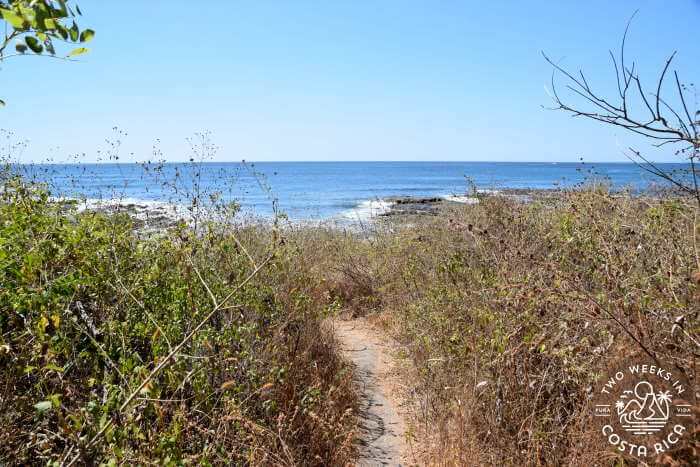
Exploring the Black Sand Beach
When you arrive at Playa Carbon, you can immediately see the unique black sand on the upper parts of the beach. At low tide there are also some rocky tidepools to explore.
Playa Carbon curves around in a tight “U” shape. Smaller rocky points divide the beach into small sections.
Toward the middle of the beach, we found some good snorkeling at lower tides. The water was very clear for us in January since there hadn’t been any rain. Keep in mind that the ocean currents here can be stronger so it’s best for more experienced snorkelers.
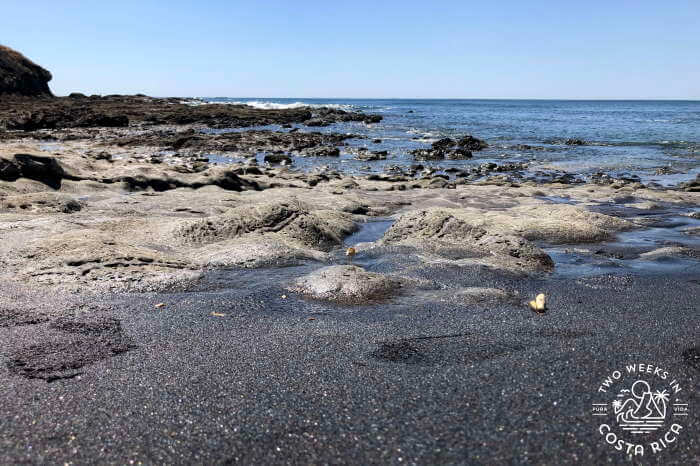
Being Prepared
One thing about Playa Carbon is that it can be extremely hot. On sunny days, the black sand can reach scorching temperatures that will burn the bottom of your feet.
There is also absolutely no shade on the beach, as it is backed by short grasses and shrubs. There are very few trees and none close to the sand.
If you are planning to spend some time at this beach, we definitely recommend carrying in a beach umbrella and whatever food and drinks you will need. There are no amenities in the immediate area. Also remember to have some kind of footwear and plenty of sunscreen.
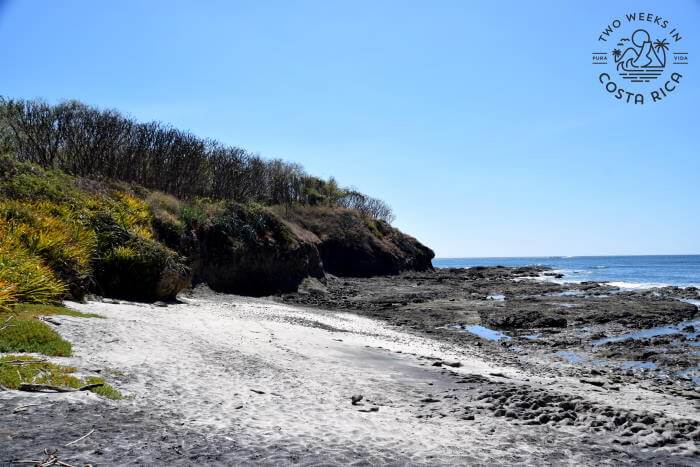
Conclusion
If you are visiting the Playa Grande area or going beach hopping in Guanacaste, you should definitely add Playa Carbon to your list. The black sand is something that makes it unique and different. And the secluded feel will be just what you need if you are trying to get away from the more crowded beaches.
Have a question about visiting Playa Carbon or want to share your experience? Leave a comment below.
Looking for more information to help you plan? Check out these posts and pages:
Rental Car Discount – A car is essential when exploring beaches in Guanacaste. Use this page to get a discount and free delivery to your hotel or vacation rental.
Playa Conchal: The Allure of Shell Beach – One of our favorite beaches in the area is Playa Conchal. The sand is made up of tiny seashells!
Guanacaste: Regional Snapshot – Learn more about the Guanacaste region of Costa Rica, including seasonal weather, major attractions, and destination information.
